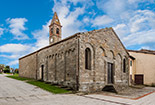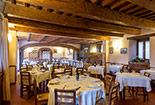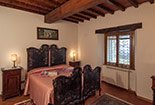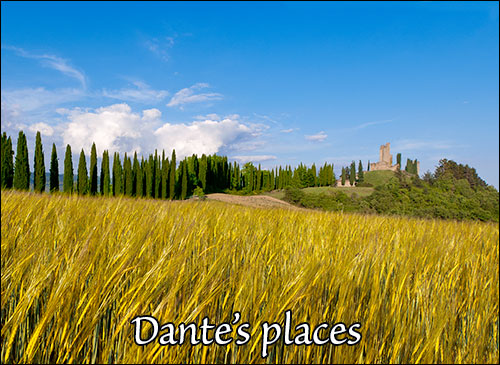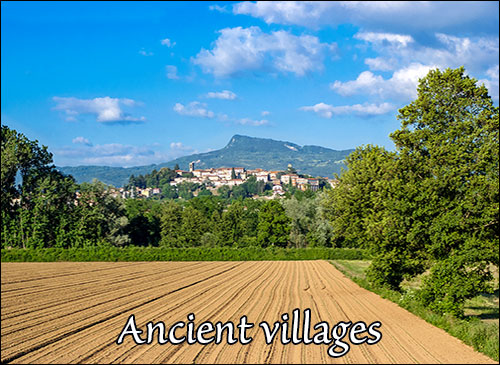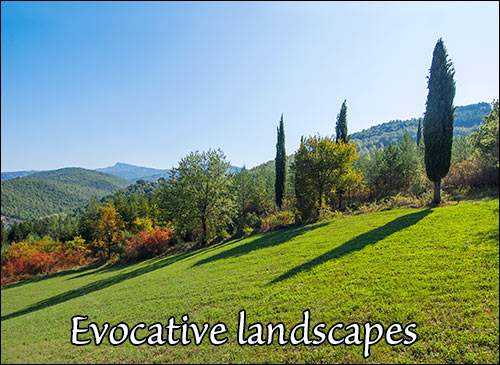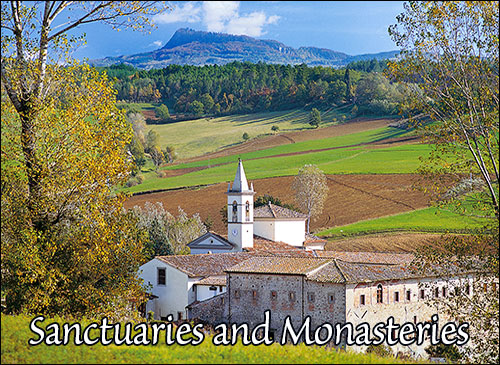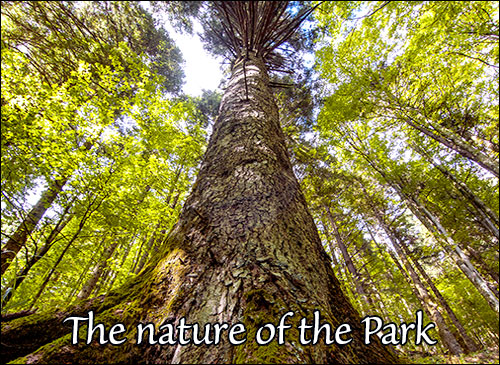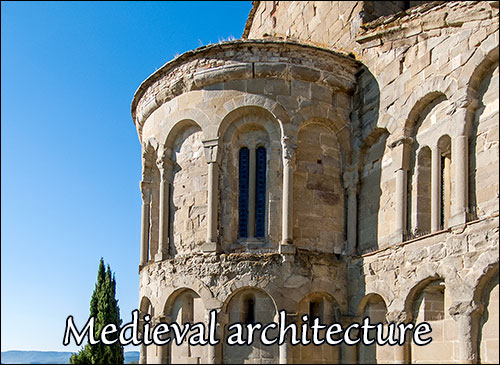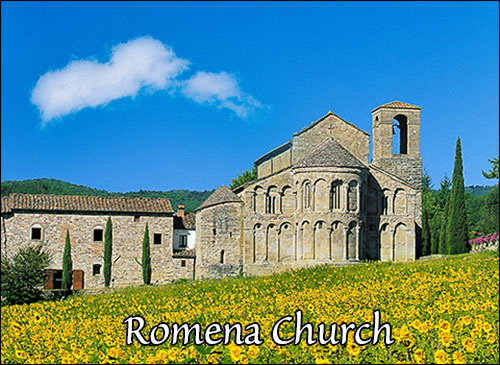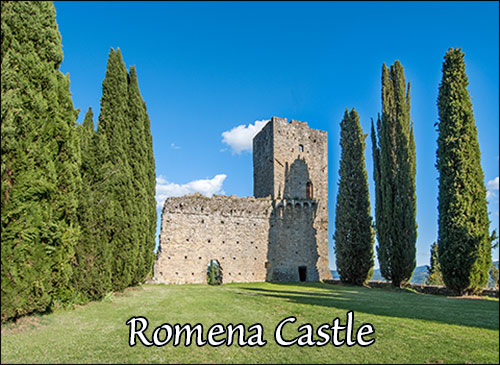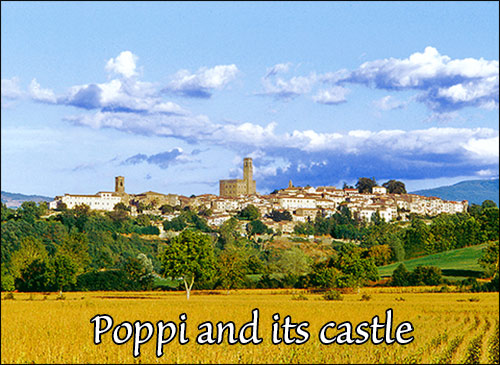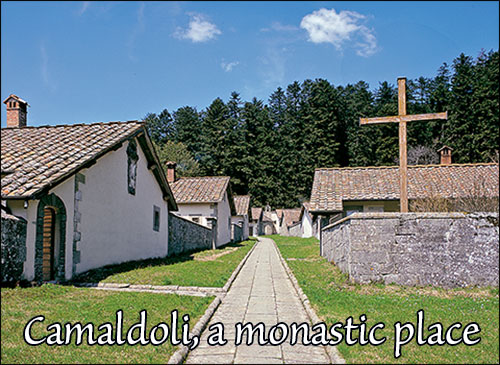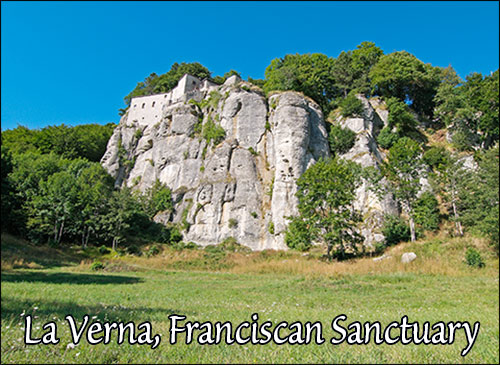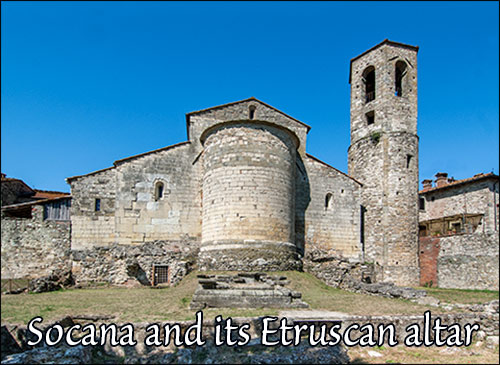CASENTINO
A beautiful valley of eastern Tuscany that you can know in every detail with this site.
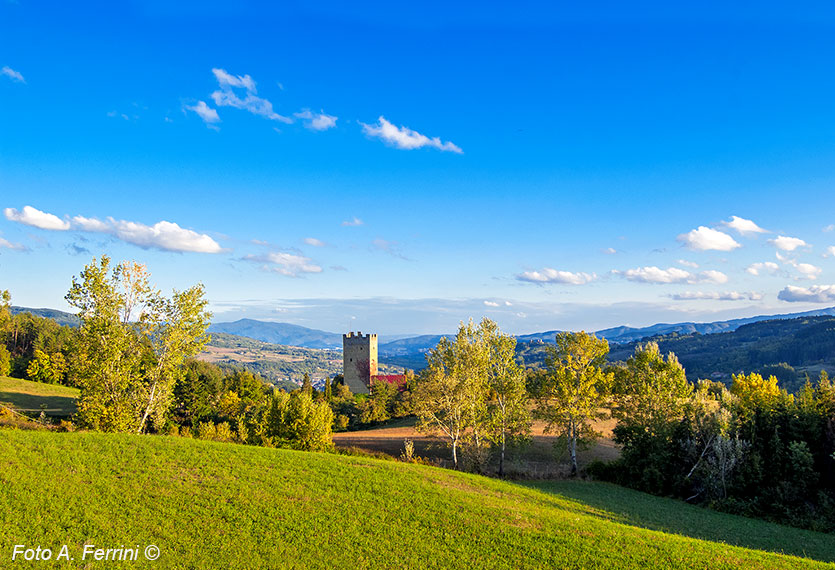
Texts and photos by Alessandro Ferrini ©
100 images in sequence of the Casentino to get to know this valley quickly. Click to enlarge
Casentino: a Tuscany as secret as fascinating.
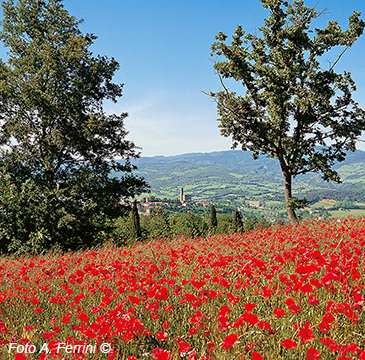 The Casentino is one of the four valleys of the province of Arezzo and it is located in eastern Tuscany. To the east, it has a natural border consisting of the Apennine ridge beyond which we find the Romagna. To the north, besides the Falterona Mount, we find the Mugello Valley in the province of Florence. We can arrive in the Casentino via different roads, and they all follow routes of very ancient origins. Who comes from Florence and the Florentine Upper Valdarno can use the Consuma Pass; while, who comes from the part of Valdarno closer to Arezzo can take the Crocina Pass. Moreover, who comes from Arezzo can use the Regional Road number 71; while, if coming from the Romagna, we can arrive in the Casentino through the Mandrioli Pass or the Calla Pass.
The Casentino is one of the four valleys of the province of Arezzo and it is located in eastern Tuscany. To the east, it has a natural border consisting of the Apennine ridge beyond which we find the Romagna. To the north, besides the Falterona Mount, we find the Mugello Valley in the province of Florence. We can arrive in the Casentino via different roads, and they all follow routes of very ancient origins. Who comes from Florence and the Florentine Upper Valdarno can use the Consuma Pass; while, who comes from the part of Valdarno closer to Arezzo can take the Crocina Pass. Moreover, who comes from Arezzo can use the Regional Road number 71; while, if coming from the Romagna, we can arrive in the Casentino through the Mandrioli Pass or the Calla Pass.
The Casentino is the first land where the Arno flows. This river has its spring, also mentioned by Dante, on the Falterona Mount at 1370 meters of height. Dante Alighieri mentions several times this valley and its places in his Divine Comedy. This is due to the fact that the Supreme Poet spent part of his exile from Florence here as a guest of Counts Guidi. They were the noble and powerful family who was the absolute owner of the upper part of the Casentino from the beginning of the 11th century to half of the 14th century. From the historic and architectural points of view, this is the period in which the evidences that have made the Casentino well-known in our days were left. Important abbeys were built (starting from the second half of the 10th century), but nowadays only one is left as such: it is the Abbey of Camaldoli, worldwide famous. Many castles and fortified centers were built. They were used as both residences of noble landowners and controlling and defensivepoints over the territory. The renowned ones we can visit nowadays are: the Castle of Romena, which was the first one being built, the Castle of Porciano and the Castle of Poppi, which is the most recent one and it still arises in its mighty original structure. There are beautiful Romanesque parish churches dating back to the 12th century that we can still admire in our days.Among these, the Parish Church of Romena, which is a National Monument, is the most charming and famous one. 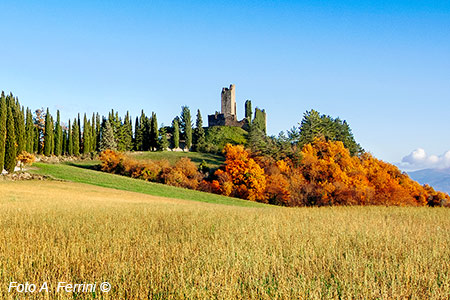 In the Casentino there is another worldwide renowned place where the devotional aspect is combined with the natural, architectural and artistic ones in a way that is beyond words: it is La Verna. That is "the savage rock 'tween the Tiber and the Arno" (Divine Comedy, Paradise, XI Canto) where, in 1224, Saint Francis received the "ultimate seal": the Stigmata. Located as a spur on the Apennine ridge, the savage Verna Mount looks like a guardian over the whole valley.
In the Casentino there is another worldwide renowned place where the devotional aspect is combined with the natural, architectural and artistic ones in a way that is beyond words: it is La Verna. That is "the savage rock 'tween the Tiber and the Arno" (Divine Comedy, Paradise, XI Canto) where, in 1224, Saint Francis received the "ultimate seal": the Stigmata. Located as a spur on the Apennine ridge, the savage Verna Mount looks like a guardian over the whole valley.
The Casentino is a place of great interest from also the artistic point of view.Even though there are no works of very well-known painters, we can find their disciples' paintings. Churches are quite always the depositories of these artistic treasures that date back from the end of the 13th century to the 18th century. Particularly interesting are: the many "gold backgrounds"; the frescoes of mainly the 14th and 15th century; the many Della Robbia glazed ceramics; the 16th century paintings, among which the most famous ones are those of Giorgio Vasari kept in the Church of the Monastery of Camaldoli; the several fine paintings dating back to the 17th and 18th century "scattered"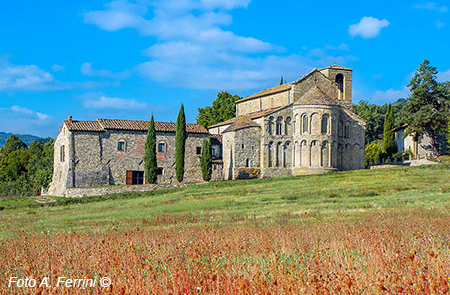 quite homogeneously all over the areas of this valley. While the Romanesque parish churches are definitely the most interesting ones when it comes to the architectural point of view and their amazing capitals, the most interesting churches from the pictorial point of view certainly are: the Parish Church of Stia, the Parish Church of Montemignaio, the Rectory of Pratovecchio, the Abbey of Saint Fedele, the Rectory of Bibbiena and the Parish Church of Sietina near Arezzo.
quite homogeneously all over the areas of this valley. While the Romanesque parish churches are definitely the most interesting ones when it comes to the architectural point of view and their amazing capitals, the most interesting churches from the pictorial point of view certainly are: the Parish Church of Stia, the Parish Church of Montemignaio, the Rectory of Pratovecchio, the Abbey of Saint Fedele, the Rectory of Bibbiena and the Parish Church of Sietina near Arezzo.
The Casentino is also famous from the archaeological point of view. There have been many findings regarding the Etruscan and Roman periods, and they are kept inside the interesting Archaeological Museum of Bibbiena. Moreover, there are two important Etruscan sites that can be visited at any time: the Parish Church of Socana with its great and magnificent sacrificial altar of the 5th century BC; the Lake of the Idols, located on the Falterona, which used to be a place of devotion for that population.
All the above is "nestled" in a wonderful nature. Even if mentioned as last, the natural environment definitely is the crown-jewel of the Casentino. At the bottom of this valley, green and the many other colours of the agricultural crops are predominant. Then, this valley gets closed by the Apennine ridge and the Pratomagno massif. On the first one, we find the National Park of the Casentino Forests, the Falterona Mount and Campigna. In this park there are some of the most beautiful fir and beech woods of whole Europe. Here, it is possible to go on relaxing walks or challenging excursions that can offer nice moments as: bumping into the animals of the forest, seeing monumental trees and enjoying the view of breathtaking landscapes. Here are also located the two important spiritual centers above mentioned: Camaldoli and La Verna. On the other side there is the Pratomagno: a unique mountain for its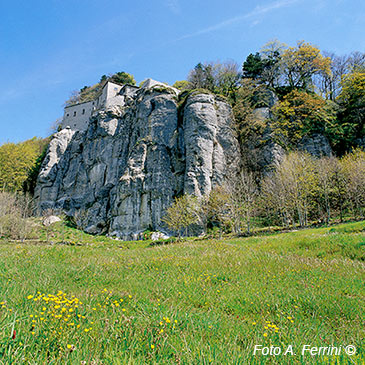 twenty kilometers of uninterrupted grassy ridge that goes from 1300 meters of height to almost 1600. It is a sort of mattress for walking as much as we want with always a constant fact: incredible views from any point we are. The Casentino and the Valdarno are always underneath us; while, further away we can see, according to the area of the mount in which we are: Florence, the plain of Arezzo, Lake Trasimeno, Mount Amiata, the Sibillini Mounts, the Apuan Alps and much more. The Pratomagno slopes are mostly covered by dense woods of oaks, chestnut.trees, firs, and beech-trees depending on the height. These forests are more genuine and "savage" than the National Park ones, and therefore, maybe, more fascinating. The slopes of the Pratomagno are characterized by many small villages located between 600 and 900 meters of height, and many of them used to be castles of Medieval origins. They are very orderly little hamlets with a characteristic charm. In their churches are often kept fine art works, which prove their important past.
twenty kilometers of uninterrupted grassy ridge that goes from 1300 meters of height to almost 1600. It is a sort of mattress for walking as much as we want with always a constant fact: incredible views from any point we are. The Casentino and the Valdarno are always underneath us; while, further away we can see, according to the area of the mount in which we are: Florence, the plain of Arezzo, Lake Trasimeno, Mount Amiata, the Sibillini Mounts, the Apuan Alps and much more. The Pratomagno slopes are mostly covered by dense woods of oaks, chestnut.trees, firs, and beech-trees depending on the height. These forests are more genuine and "savage" than the National Park ones, and therefore, maybe, more fascinating. The slopes of the Pratomagno are characterized by many small villages located between 600 and 900 meters of height, and many of them used to be castles of Medieval origins. They are very orderly little hamlets with a characteristic charm. In their churches are often kept fine art works, which prove their important past.
This website describes, with thousands of pages, this Tuscan land in every one of its aspects. Why "ilbelcasentino"? Because the Casentino is really beautiful, not only for its most famous things, but also for the aspects that often escape.
Browsing through the photo of this web page, you will be able to discover only some of the things the Casentino can offer: the main ones. You will certainly want to go more into its topics, to look for other ones, and definitely to physically visit this Tuscan land.
THE ASPECTS THAT MAKE CASENTINO A WONDERFUL LAND




